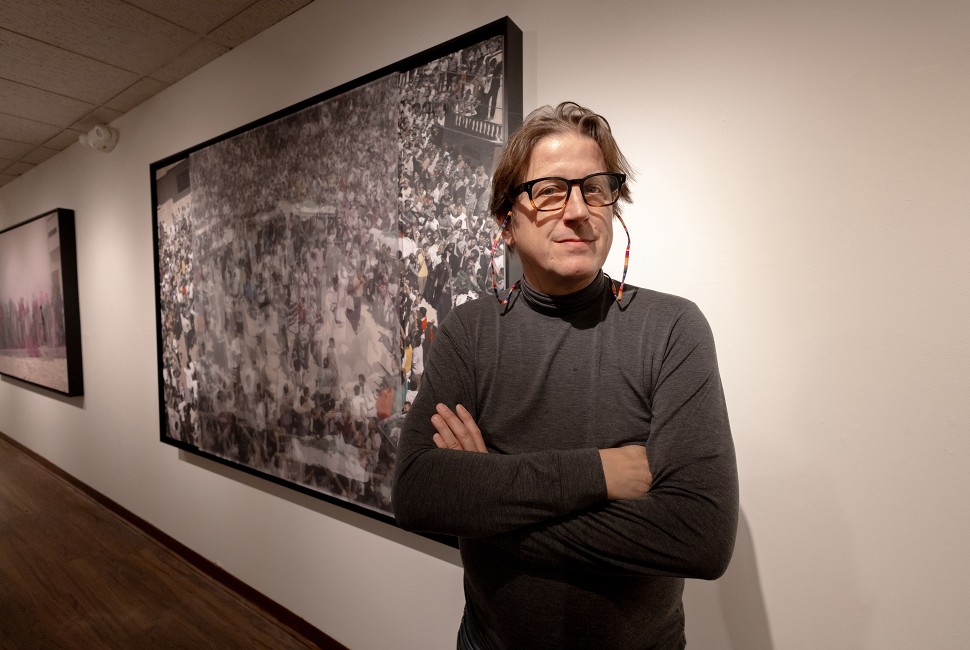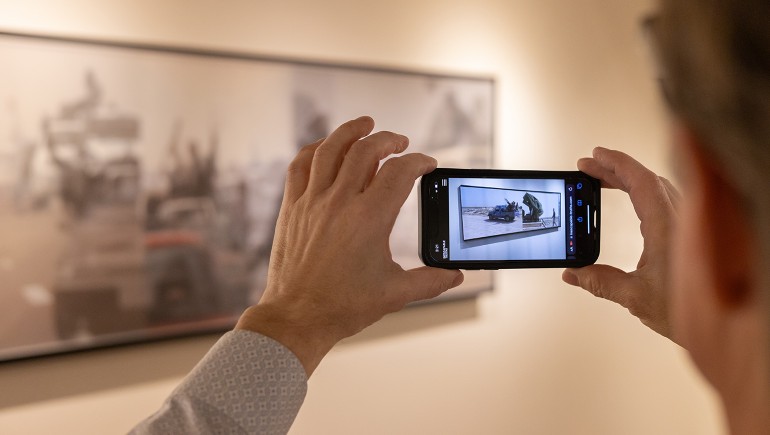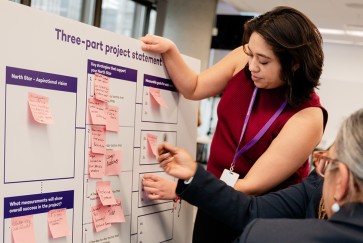Conceptual artist Bradley McCallum wants the legacy of James Foley ’08 MSJ to be defined by his life and courageous work as a conflict journalist. During his career, Foley — Jim, to his friends — reported in Iraq, Afghanistan, Libya and Syria, giving Americans a window into the realities of war.
However, Foley’s life and work are sometimes overshadowed by his violent death at the hands of militants of the Islamic State group in August 2014, nearly two years after they kidnapped him while he was reporting in Syria.
McCallum remembers video of Foley’s execution spreading over the internet. “There was something about witnessing it that just felt wrong,” he said.
When the social justice-focused artist sought a new project in 2016, that memory came back to him. He reached out to Diane Foley, James’ mother and founder of the James W. Foley Legacy Foundation, which advocates for U.S. citizens wrongfully detained abroad and educates and protects journalists and international travelers.
“Thinking about it from a cultural literacy point of view, how do we remember, how do we acknowledge, how do we reclaim someone's identity is what I think captured her interest,” McCallum said.
She agreed to allow the artist access to Foley’s unpublished b-roll footage, and the foundation awarded him a grant to begin work.
Now, on the 10th anniversary of Foley’s death, McCallum’s project has come to fruition with the exhibition “Inescapable Truths: James Foley’s Indelible Legacy,” a series of mixed media artworks based on Foley’s video footage covering civil wars in Libya and Syria during 2011 and 2012.
The exhibition opens April 3 on the fourth floor of University Library and the Dittmar Gallery inside Norris University Center, with an additional work inside the entrance of the library. An opening reception will be held that day, with an artist talk from McCallum and a poetry reading from Daniel Brock Johnson, a friend of Jim Foley and author of the poetry collection “Shadow Act: An Elegy for Journalist James Foley.”
“Inescapable Truths” will be on display at the library until June 14 and at the Dittmar Gallery until May 7. Additionally, two works will be on display during EXPO Chicago at Navy Pier April 11-14.



